John Riley has transformed his family farm in Aberdeenshire with a spirit of adventure
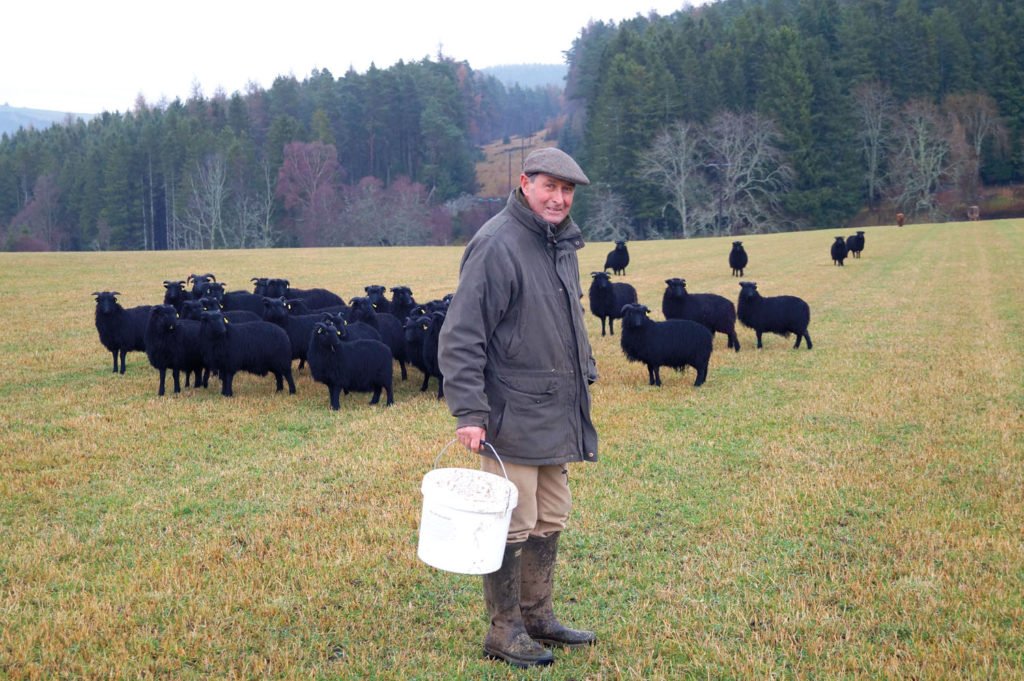
Semeil Farm nestles in a beautiful Upper Donside glen on the edge of the Cairngorms National Park, 15 miles from the Balmoral Estate. When John Riley purchased Semeil in 1985 there were no hedges or trees on the south side of the 300 acres of mixed farmland, so he asked GWCT advisor Ian McCall to design a planting plan.
Farm facts
- Location: Aberdeenshire
- Type of farming: Arable, cattle, sheep
- Acreage: 300
- Funding grants: ESAS
Ian’s scheme mirrored John’s vision and 34 years later, the trees and hedges have matured, producing an impressive dividend for both wildlife and game management. The wide range of species attracted to the farm includes goldeneye duck, osprey, red squirrel and snow bunting. Good numbers of bullfinches and great flocks of chaffinches gather in winter and house sparrows fill the farmyard.
John said: “As well as using the latest technology, I think it’s important to consider how things used to be.When we came, people said there were never hedgerows in this part of the world, but I discovered 200-year-old records of hedge lines at Semeil.”
John has a self-confessed weakness for digging ponds (six in all), and being a keen fisherman he has stocked them with brown trout, which have bred successfully. He said: “One morning we looked out of the window and saw three or four ospreys stacked up like kestrels hovering over the pond after the trout up there.”
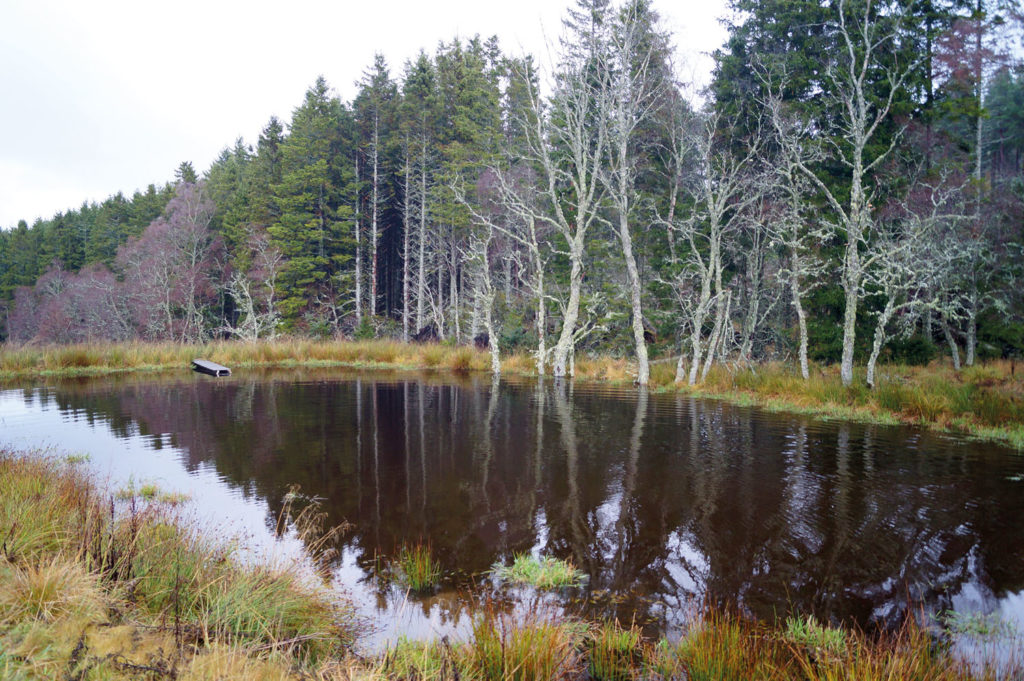
A wide range of duck species including teal, mallard, goldeneye, wigeon, tufted and scoter, of which there are only 53 breeding pairs in the whole of the UK, are regular visitors. Care has been taken with planting around the ponds. Heather and juniper, one of the UK’s three native evergreens, have been re-established and they have begun to regenerate naturally thanks to areas being fenced off from grazing cattle, sheep and deer. During the winter, John feeds the duck with barley every day in the shallows. Each pond is stream-fed to maintain its level in the summer, and in many cases the outflow is allowed to spread over the mossy ground, creating a wetland habitat attracting snipe and vast hatches of frogs, whose tadpoles feed the trout in turn.
Another passion is salmon conservation. John bought the farm partly because it came with fishing on 1.75 miles of single bank on the magnificent Don river, and he has the fishing rights on a further half-mile. On one of his beats he is part-funding a new fish ladder to replace an old concrete one at a cost of £12,000 to help the salmon migrate over the weir to the upper reaches.
He said: “Our stretch near the wear is one of the few places you can see fish both breeding and swimming up the river to spawn in the same place. Much is made of what happens to salmon in our rivers and I think predation may be a cause, but on the east coast we don’t have to contend with fish farming. The problem is when salmon go out to sea they don’t come back, and we can’t understand why.”
As well as fishing, the river provides hydroelectric power in the form of a giant Archimedes’ screw, which John bought and helped to install. Driven by the flow of the water, it produces enough electricity to run 90 homes. Initially, the Don Salmon Board objected to the scheme on the basis that the fish might be crushed by the action, but that has not proved to be the case and the tail race has provided a new spawning ground.
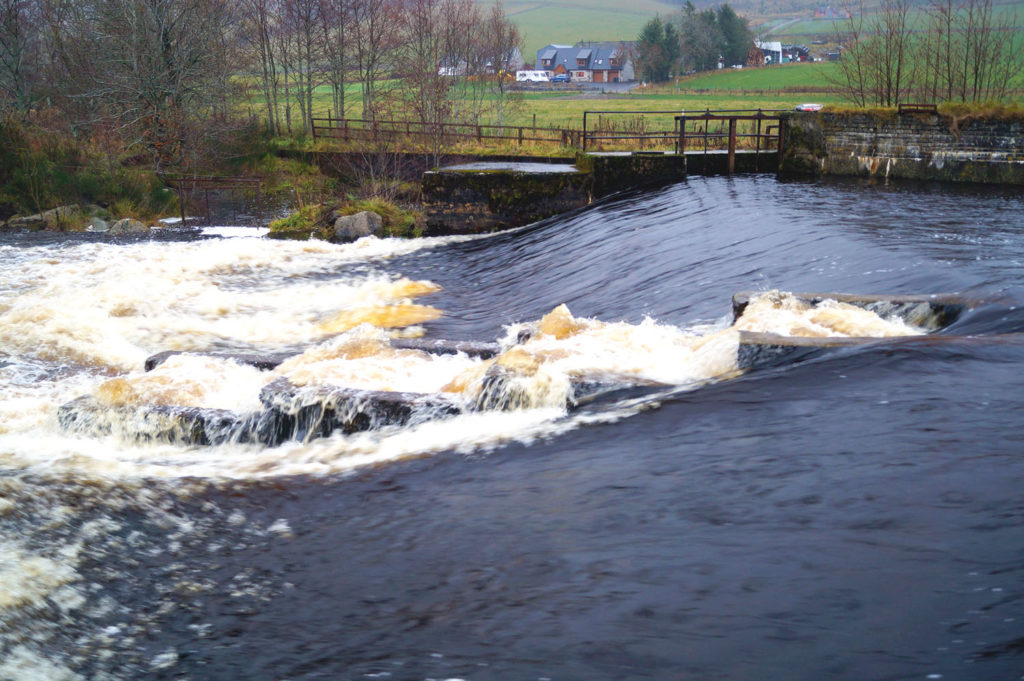
Hydroelectric is not the only source of renewable power at Semeil. A pine plantation was ready for clear fell when the Rileys moved to the farm, ensuring a huge supply of logs, so John had a biomass burner installed to heat the farm house and plumbed in parts of the underfloor heating himself.
Both the forestry and the salmon board have, on occasion, caused stumbling blocks to innovation and conservation. John said: “I found the Forestry Commission quite risk-averse in terms of what trees can or can’t be planted. The people on the ground seem to be nervous of getting it wrong and often won’t approve a planting plan, even if it makes more sense for the particular location than the accepted formula.”
At the same time, without agri- environment scheme funding, the farm would not have been able to deliver the biodiversity benefits it has achieved. He said: “We were the second farm to go into ESAS in the 1980s, which worked well because it was simple, and we’ve been in most of the schemes since.”
John and his wife Jacqueline recently acquired a croft on the Isle of Uist in the Outer Hebrides, and they approached its management with the same drive for self-sufficiency. For example, they have filled new drainage ditches with scallop shells from the local shellfish factory, rather than gravel, and regularly use seaweed from the shoreline as an organic fertiliser.
In addition, they are bringing their Highland cattle and Hebridean sheep from the island to be finished in Aberdeenshire, echoing a traditional movement of livestock from West to East Scotland. The heritage breeds are natural foragers and can stay outside longer during the winter months. John believes meat production in parts of Scotland would do well to return to native livestock. He said:“On Uist and other islands you find Continental breeds, which grow quickly, but require processed food to be shipped out as they won’t fatten on the grass. We are opting for quality rather than quantity, charging a premium for rare breed meat from a place where it’s harder to farm intensively, such as the Western Isles.”
The cattle and sheep from Uist allow a mixed farm system at Semeil, with livestock providing fertiliser for commercial rotations of oats, barley, red clover and oilseed rape. More recently, John has grown heritage seed from Uist including rye, oats and Bere barley, the oldest grain in the UK, brought over by the Vikings. Heavy snowfalls are guaranteed after Christmas making winter crops unviable, so John keeps his stubbles until later in the year, which benefits farmland birds. He said: “By late November the birds have gleaned the oats and barley, but rape stubble is still there, and snow buntings regularly come down from ski slopes to feed on it in the harsher times of year.”
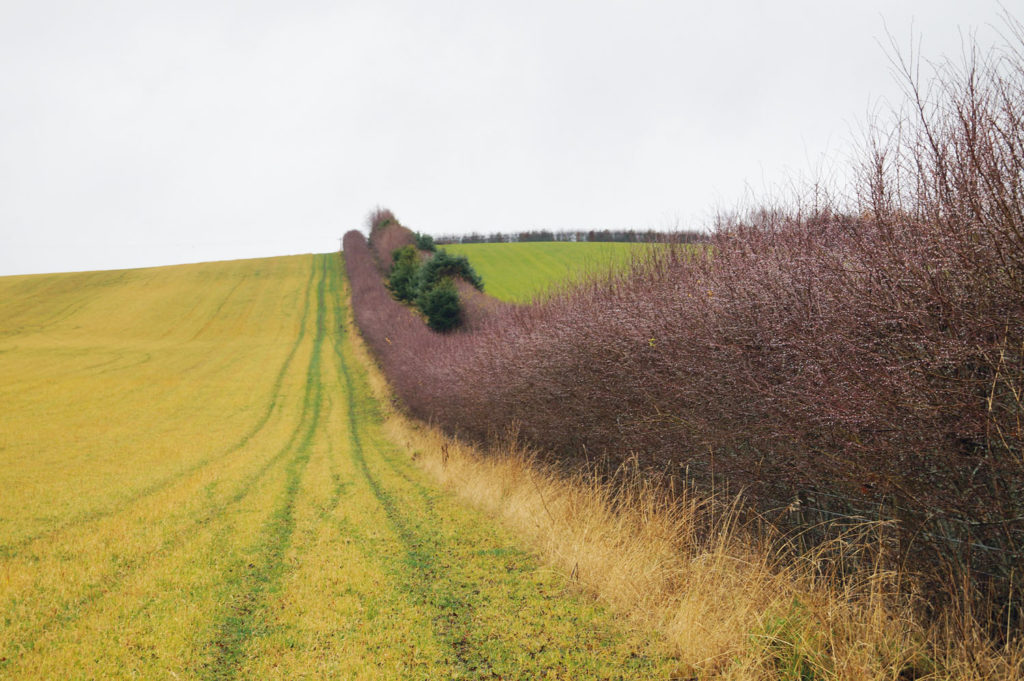
Four miles of hedges have gone in. 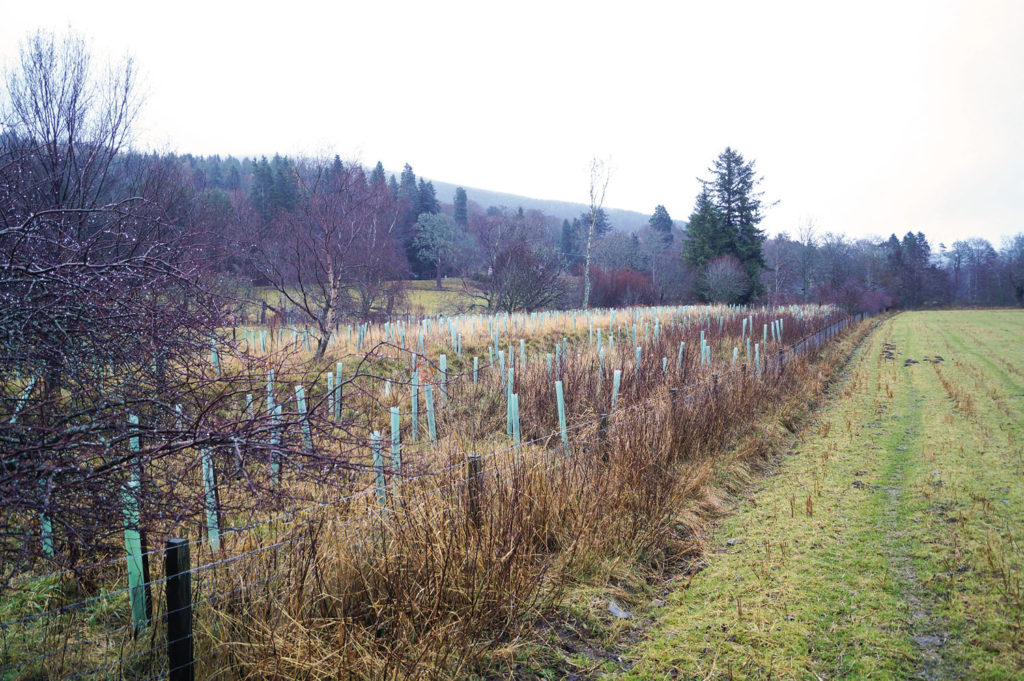
25 acres of trees planted.
An impressive four miles of hedge-planting gives vital shelter for farmland birds in winter and essential nesting habitat in spring and early summer. Blackthorn and hawthorn are the principal plants, offering good protection from birds of prey at nesting time. John tends to wait until late December once the fruit has gone before trimming them. In addition, across the farm he has planted stands of mixed deciduous and conifer trees including rowan and Norway spruce, which he believes should be considered a native as they were here before the last ice age and are the main food source for the local red squirrels.
Another source of food and shelter are cover crops planted next to the hedges. At 1,000ft maize struggles, but strips of fodder rape and oats have proven popular with seed-eating songbirds, and canary grass offers winter cover. Most of the plots have to be fresh drilled each year, so to keep costs down next year’s planting plan will see more Caledonian kale, which lasts two or three years. In addition, grain is spread by hand and in hoppers until the end of May, providing a critical source of food for the farmland birds during the hungry gap. “I think you have to experiment and take risks. For example, I started with millet, which looked fantastic, but soon discovered by trial and error that you need to stick to the crops that work on your land.”
John and his father moved from Scotland to rural Lincolnshire when he was 10. Growing up in the country sparked his love of nature, and beating on a local shoot inspired him to want to be a gamekeeper. “My dad said I wouldn’t make a good keeper because I would want to do things my own way. He suggested I found a way to buy my own farm and run a small shoot myself.”
Having followed his father’s advice, John’s DIY shoot releases 100 birds to accommodate three days shooting a year, with a modest mixed bag of 30 pheasant and duck on each. In recent years, only cock pheasants have been released and the wild population is growing, with the long-term aim being switch to a purely wild-bird shoot. To preserve the pheasants and songbirds on the ground during the breeding season, foxes and corvids are controlled. Tunnel traps are used for stoats and rats on the farm and mink on the river, which kill the wild duck as well as the fish.
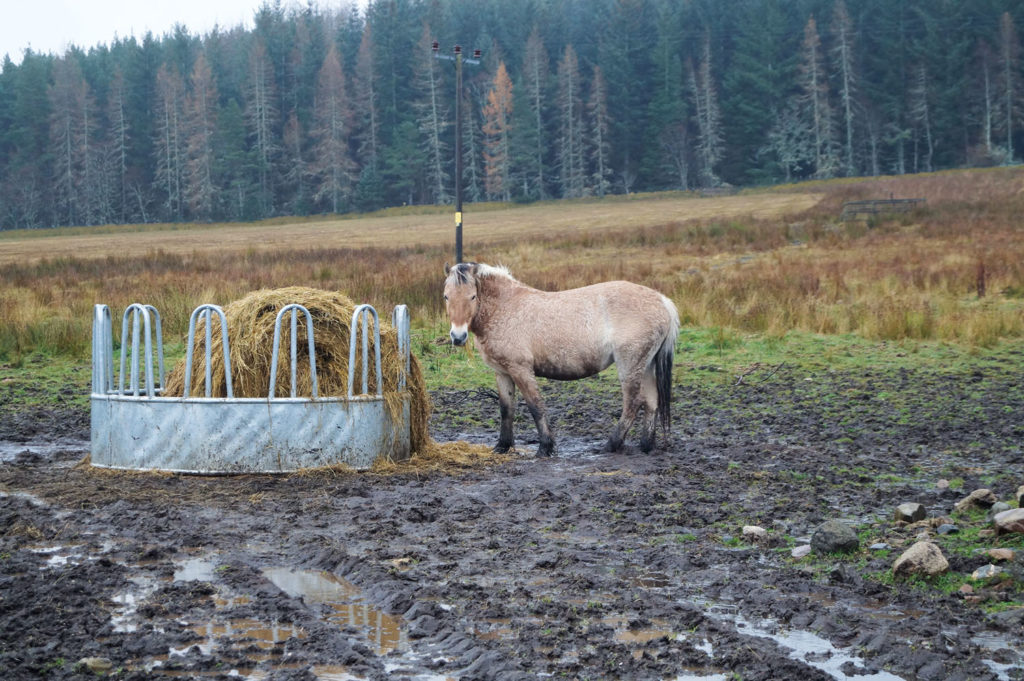
Looking ahead, John is handing over the main farm business to his son John, but will continue with the shoot and conservation work.The hedges he planted 34 years ago are becoming leggy and drafty, so he is going to begin cutting and laying them. Jacqueline, who runs her own equestrian centre and keeps rare Norwegian Fjord ponies on the farm, plans to organise farm tours to promote the rare breeds and wildlife conservation.
The Rileys’ determination to keep improving the habitat and land at Semeil Farm comes from a belief in the need to leave a legacy. John said: “All three of my boys John, Toby and Freddie share a love of shooting and fishing, so I’m hopeful they will continue the conservation work. Time in this world is limited – you want to get on and make a difference.”
This case study is taken from our book Working Conservationists Issue 2, available here for just £3.95.
